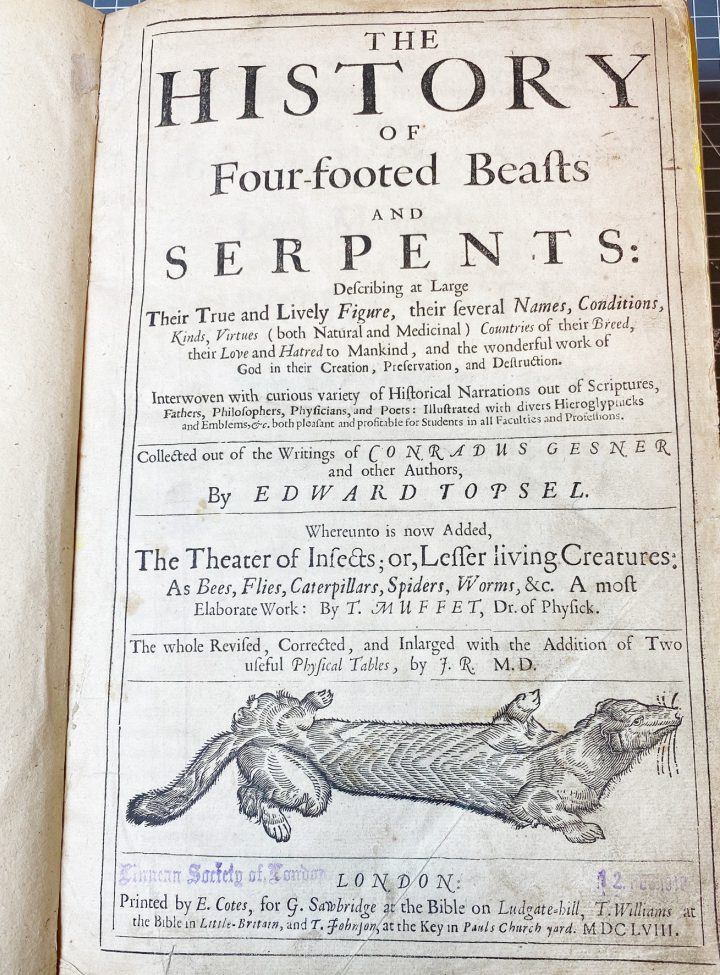Edward Topsell's Reindeer
Conservator Janet Ashdown looks at Edward Topsell's 17th-century text 'The History of Four-footed Beasts and Serpents'
Published on 27th November 2020

Title page of Edward Topsell's The History of Four-footed Beasts and Serpents (1658)
As we begin the countdown to Christmas we thought we would look at a rather interesting book in our collections that has just been conserved through our book adoption scheme, The History of Four-footed Beasts and Serpents (1658) by Edward Topsell.
Topsell (c. 1572–1625) was a graduate of Christ’s College, Cambridge who went on to become a clergyman, the perpetual curate at St Botolph’s church in Aldersgate, London. He wrote several books on religion and morality, as well as The History of Four-footed Beasts and Serpents, a popular book about animals which he described as ‘to profit and delight the reader’.
Topsell had a limited knowledge of many of the animals he described and he relied heavily upon various sources, including the work of scholarly authors like Conrad Gesner, alongside myths and proverbs. His descriptions are entertaining, and include stories and information about actual animals (the rhinoceros, horse and baboon) and mythical beasts (like sphinxes, manticores and gorgons) which are illustrated with wood-cut engravings. Even when writing of mythical beasts like unicorns, Topsell references scholars, should the ‘foolish world’ find it too incredible, and need the confirmation of ‘sundry learned men’. However this also led him to repeat some unusual claims, such as that apes are petrified of snails.
'The boughs of a tree'

Our link to the Christmas season is Topsell’s lengthy description of the reindeer, which includes some striking woodcuts and details of its physical appearance and habits, as well as its many uses as a domesticated animal:
This beast was first of all discovered by Olau Magnus, in the Northern part of the world, towards the pole Antique, as in Norway, Swelta, Scandinavia, at the first sight whereof he called it Rangifer, quasi Ramifer, because he beareth horns on his head like the boughs of a tree.
His account states that they change colour ‘according to the time of year’, that they cannot endure heat, and that when they are ‘wonderfully annoyed with wolves’ they gather into a circle and use their antlers to fight.
Adoption and conservation

The repaired and conserved copy of Topsell's The History of Four-footed Beasts...
The Linnean Society’s copy of this book is the second edition, previously having been re-bound and repaired, probably in the early 20th century. These repairs were not in keeping with the original binding and had become worn, and the front and back boards were detached, whilst the spine was beginning to fall apart.
Thanks to a generous donation through the Society’s AdoptLINN scheme, this important book has been conserved and sympathetically repaired, and is now protected in a bespoke box.
Janet Ashdown, Conservator
